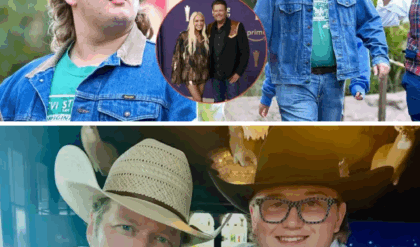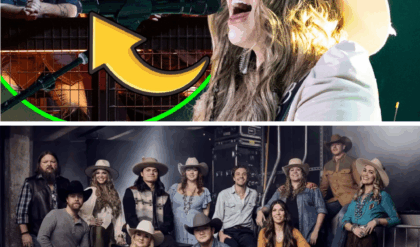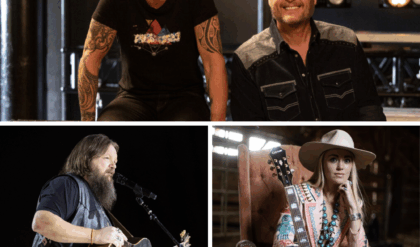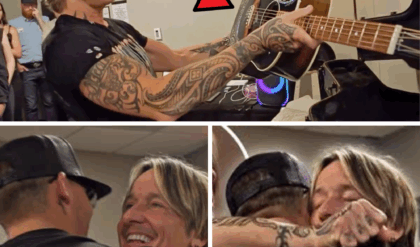On July 10, 2025, the cobblestone square of Place de la Contrescarpe in Paris’s vibrant Latin Quarter transformed into an open-air stage for one of the most electrifying musical moments of the year. In a flashmob that stunned onlookers and exploded across social media, 30 musicians, led by the charismatic Mickey Callisto and featuring 11-year-old guitar prodigy Olly Pearson, delivered a spine-chilling performance of Queen’s iconic “Bohemian Rhapsody.” The event, orchestrated by pianist Julien Cohen to celebrate the song’s 50th anniversary, turned a quiet Thursday afternoon into a rock opera spectacle that left Parisians and tourists alike speechless. With over 500 million views and 30 million likes in just days, the flashmob has become a global sensation, proving the timeless power of Queen’s music and the magic of spontaneous artistry.
The performance began unassumingly, as Parisians sipped coffee at café tables and tourists strolled through the bustling square. Suddenly, three women leaned out of a first-floor window above a brasserie, their voices harmonizing the haunting opening lines: “Is this the real life? Is this just fantasy?” The crowd froze, heads turning skyward as the melody floated over the cobblestones. Moments later, Julien Cohen, a Paris-based pianist known for his spontaneous public performances, rolled a piano into the square, his fingers dancing across the keys. From a horse-drawn carriage, Mickey Callisto emerged, his theatrical presence and soaring vocals channeling Freddie Mercury with uncanny precision. The crowd erupted in gasps as more musicians appeared—singers from balconies, drummers from side streets, and an opera choir from surrounding apartments—building the song’s iconic layers.
The highlight of the flashmob came when 11-year-old Olly Pearson, a Wrexham-born guitar prodigy, stepped forward with his electric guitar. Fresh off a fourth-place finish on Britain’s Got Talent 2025, where he earned two Golden Buzzers for his renditions of “Highway to Hell” and “Bohemian Rhapsody,” Pearson unleashed a solo that echoed Brian May’s legendary riffs. His fingers flew across the fretboard with a precision and passion that belied his age, drawing cheers and stunned silence from the crowd. “I’ve never seen an 11-year-old play like that!” one onlooker shouted, while another recorded the moment, later posting, “This kid is unreal—Freddie would be proud!” Pearson’s performance, paired with Callisto’s commanding vocals, turned the square into a pulsating rock concert, with strangers swaying, singing, and filming the spectacle.
Callisto, a 28-year-old Sunderland native, brought a larger-than-life energy to the performance. Known for his Britain’s Got Talent audition, where his cover of “Who Wants to Live Forever” drew comparisons to Mercury, he arrived in Paris fresh off a controversial semi-final elimination. Despite that setback, his flashmob performance was a triumph, blending vocal power with theatrical flair. Riding in on the carriage, he belted out “Mama, just killed a man,” his voice shifting effortlessly through the song’s dynamic registers. “It was nerve-racking,” Callisto later shared on social media. “No rehearsals, just pure passion. Singing ‘Bohemian Rhapsody’ in Paris with 30 incredible musicians—it’s a dream I’ll never forget.”
The ensemble of 30 artists was a masterstroke of coordination. The DDKN sisters—Stella, Nounée, and Anouche—kicked off the performance with their angelic harmonies, while countertenor Michaël Koné delivered a show-stopping “Galileo” from a balcony. Drummer Martin Pennec and bassist Paul Pasmanian added a driving rhythm, while an opera choir, including talents like Eeva Matilda and Nicolaé, filled the square with the song’s climactic harmonies. The choreography was seamless, with singers and musicians emerging from windows, doorways, and even a parked car, creating the illusion that the entire neighborhood had come alive with music. The production, captured by videographer Manon Dess and mixed by sound engineer T. Jnvc, was polished yet raw, preserving the spontaneity of the moment.
The crowd’s reaction was electric. Diners abandoned their meals to join the throng, tourists rushed to capture videos, and locals clapped along, some tearing up as the song reached its operatic peak. “It felt like Paris stopped for six minutes,” one café-goer later posted online. “Strangers were hugging, singing, crying—it was pure magic.” The performance culminated in a rock-fueled finale, with Pearson’s guitar and Callisto’s vocals soaring as the ensemble united in the square. The crowd’s thunderous applause echoed through the streets, with shouts of “Encore!” ringing out as the musicians embraced, their faces alight with joy.
Social media exploded within hours of Cohen posting the video on September 9, 2025, to his YouTube and Instagram channels, which boast over 6 million subscribers. By the next day, clips had amassed over 50 million views, climbing to 500 million by week’s end. TikTok and Instagram reels of Pearson’s solo and Callisto’s entrance went viral, with comments like “This is the craziest flashmob ever!” and “Mickey’s voice is Freddie reborn!” flooding the platforms. One user wrote, “I’m 10 minutes late for work because I couldn’t stop watching!” Another posted, “Olly Pearson at 11 shredding like that? He’s a legend in the making.” The hashtag #ParisBohemianRhapsody trended globally, with fans from Tokyo to New York sharing reactions and calling for a Part 2, which Cohen teased would feature extended solos and new harmonies.
The flashmob’s timing was poignant, coinciding with the 50th anniversary of “Bohemian Rhapsody’s” first recording session in August 1975. Once dismissed by Queen’s label as “too long for radio,” the six-minute epic became a cultural touchstone, blending rock, opera, and balladry. The Paris performance honored that legacy, reimagining the song as a communal celebration. Cohen, a classically trained pianist who thrives on bringing music to unexpected places, saw the flashmob as a tribute to Queen’s genius. “This was about uniting people through music,” he said in an Instagram post. “Paris, ‘Bohemian Rhapsody,’ 30 artists—it’s a moment we’ll all carry forever.”
For Pearson, the event was a milestone in a breakout year. Having started playing guitar at six under his grandfather’s guidance, the young musician has cited influences like AC/DC, Van Halen, and Queen. His BGT performances, including a fiery “Live and Let Die,” earned praise from Simon Cowell, who called him “a star in the making.” In Paris, Pearson’s solo on “Don’t Stop Me Now” during Part 2 of the flashmob, released days later, further cemented his reputation, with fans raving, “Olly’s fingers move faster than lightning!” His social media, managed with help from his parents, is filled with clips of him busking in Chester and practicing riffs, showcasing a passion that resonates with fans worldwide.
Callisto’s journey has been equally compelling. After facing criticism on BGT for being restricted to Queen covers instead of his original song “Supernova,” he used the flashmob to reclaim his narrative. “This was my chance to sing from the heart,” he said. “Freddie’s spirit was with us.” His performance drew gig requests from Singapore to Amsterdam, with TV personality Ruth Langsford messaging him to say the video moved her to tears. The flashmob’s success has sparked talk of a European tour, with Cohen, Callisto, and Pearson rumored to be planning more pop-up performances.
The production’s scale set it apart from typical flashmobs. Unlike simpler gatherings, this one featured a full orchestra’s worth of talent, with singers in apartment windows creating a surround-sound effect. The cinematography, with sweeping drone shots and close-ups of Pearson’s fretwork, amplified the spectacle, making viewers feel as if they were in the square. The event’s viral spread reflects a universal hunger for shared moments of joy, with comments like “This is the world I want to live in” capturing its impact. For those in Paris, it was a fleeting gift—a reminder that music can turn strangers into a community.
The Bohemian Rhapsody flashmob wasn’t just a performance; it was a cultural phenomenon that bridged generations and borders. Callisto’s Mercury-esque showmanship, Pearson’s prodigious talent, and Cohen’s visionary direction created a moment that resonated far beyond Place de la Contrescarpe. As clips continue to rack up views and fans clamor for more, the Paris flashmob stands as a testament to Queen’s enduring legacy and the power of music to unite, inspire, and leave the world speechless. Whether you were there or watching from a phone screen, this was a concert for the ages—proof that even in a digital age, a spontaneous burst of artistry can make the heart sing.





